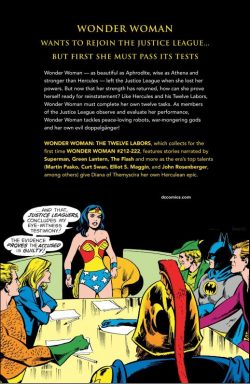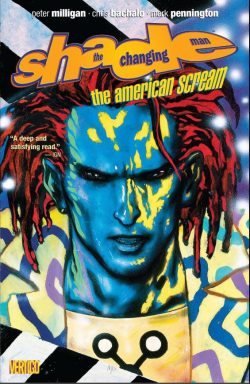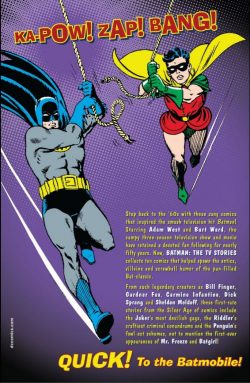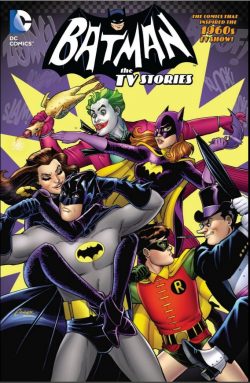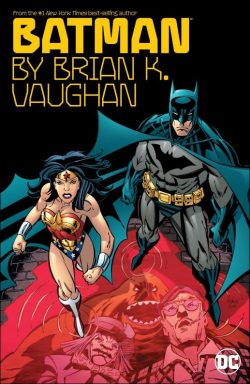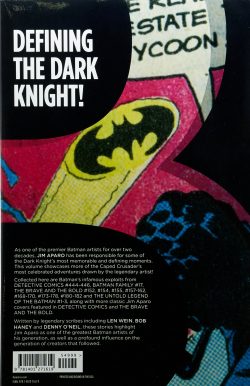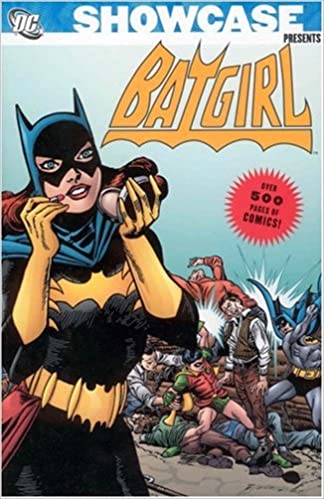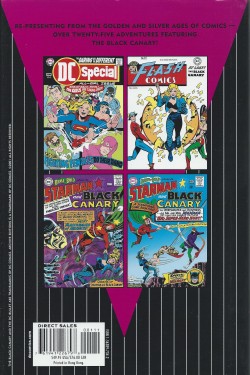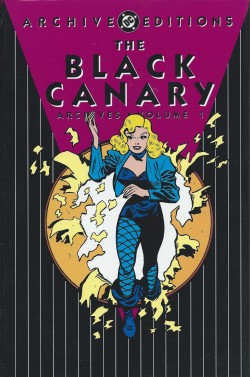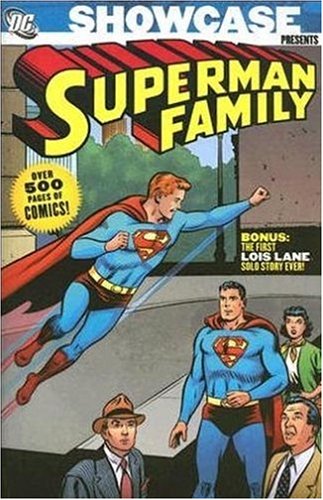
By Otto Binder, Curt Swan & Ray Burnley, Jerry Coleman, Ruben Moreira, Al Plastino, Don Cameron, Ed Dobrotka & various (DC Comics)
ISBN: 978-1-4012-0787-8 (TPB)
Stress-alleviating Fun is in pretty short supply everywhere these days, but if you’re a comics fan susceptible to charming nostalgia, this item – readily available in paperback, but tragically still not compiled in any digital format yet – might be a remedy for those old Lockdown Blues…
When the blockbusting Man of Tomorrow debuted in Action Comics #1 (June 1938) he was instantly the centre of attention. However, even then the need for a solid supporting cast was apparent and quickly catered to. Glamorous daredevil girl reporter Lois Lane premiered with Clark Kent and was a constant companion and foil from the outset…
Although unnamed, a plucky red-headed, be-freckled kid worked alongside Clark and Lois from Action Comics #6 (November 1938) and was called by his first name from Superman #13 (November-December 1941) onwards. The lad was Jimmy Olsen and he was a major player in The Adventures of Superman radio show from its debut on April 15th 1940: somebody the same age as the target audience in place for the hero to explain stuff to (all for the listener’s benefit) and the closest thing to a sidekick the Man of Tomorrow ever needed…
When the similarly titled television show launched in the autumn of 1952, it became a monolithic hit. National Periodicals thus began tentatively expanding their increasingly valuable franchise with new characters and titles. First up were the gloriously charming, light-hearted escapades of that rash, capable but naïve photographer and “cub reporter†from the Daily Planet. The solo-career of the first spin-off star from the Caped Kryptonian’s ever-expanding entourage began with Superman’s Pal Jimmy Olsen #1, which launched in 1954 with a September-October cover date.
As the decade progressed, the oh-so-cautious Editors at National/DC tentatively extended the franchise in 1957, just as the Silver Age of Comics was getting underway and it seemed there might be a fresh and sustainable appetite for costumed heroes and their unique brand of spectacular shenanigans. Try-out title Showcase – which had already launched The Flash (#4 & 8) and Challengers of the Unknown (#6-7) – followed up with a brace of issues entitled Superman’s Girl Friend Lois Lane in #9 and 10. Soon after, she won a series of her own – in actuality her second, since for a brief while in the mid-1940s she had her own solo-spot in Superman.
This scintillatingly addictive monochrome tome chronologically re-presents those experimental franchise expansions, encompassing Superman’s Pal Jimmy Olsen #1-22, (September/October 1954 to August 1957) and Showcase #9 (July/August 1957), plus the very first Lois Lane solo strip (from Superman #28 – May/June 1944) as a welcome bonus.
The vintage all-ages entertainment (courtesy of dedicated creative team Otto Binder, Curt Swan & Ray Burnley) begins with ‘The Boy of 1000 Faces’ in which the ebullient junior journalist displays his phenomenal facility for make-up and disguise to trap a jewel thief before heading to timber country and solving the ‘Case of the Lumberjack Jinx’ and latterly masquerading as ‘The Man of Steel’s Substitute’ to tackle public requests too trivial for his Kryptonian chum.
‘The Flying Jimmy Olsen’ opened the second issue with a daring tale of sheer idiocy as the lad swallows an alien power-potion with staggering disregard for the potential repercussions (a recurring theme of those simpler times) after which ‘The Hide and Seek Mystery’ displays his crime-solving pluck as Jim hunts down more jewel thieves. Then, the boy becomes ‘Jimmy Olsen, Superman’s Ex-Pal’ to expose a cunning conman.
The red-headed rascal became ‘The Boy Millionaire’ in #3 when a wealthy dowager repaid a kind deed with a vast cash reward. Sadly, all that money brought Jimmy was scammers, conmen and murderous trouble. After that he heads to Tumbleweed, USA to cover a rodeo and somehow is (mis)taken for ‘The Fastest Gun in the West’ before meeting the highly suspect eccentric who is ‘The Man Who Collected Excitement’.
‘The Disappearance of Superman’ perplexes Metropolis in #4 until his valiant pal solves the mystery and saves the Caped Kryptonian’s life, whilst – as ‘The Hunted Messenger’ – Jimmy cheats certain death to outwit gangsters before replacing a regal look-alike and playing ‘King for a Day’ in a far off land threatened by a ruthless usurper.
In issue #5, ‘The Boy Olympics’ shares Jimmy’s sentimental side as he risks his job to help young news vendors from a rival paper and is almost replaced by a computer in ‘The Brain of Steel’, before beguiling and capturing a wanted felon with ‘The Story of Superman’s Souvenirs’…
The cutthroat world of stage conjuring finds him competing to become ‘The King of Magic’ in JO #6’s first tale, after which the diminutive lad endures a punishing diet regime – hilariously enforced by Superman – to cover the sports story of the year in ‘Jockey Olsen Rides Star Flash’. The last tale sees Jimmy bravely recovering ‘100 Pieces of Kryptonite’ that fell on Metropolis, rendering Superman helpless and dying…
Jimmy Olsen #7 finds the boy teaching three rich wastrels a life-changing lesson in ‘The Amazing Mirages’, after which a magic carpet whisks him away to write ‘The Scoop of 1869’ before the lad’s boyhood skills enable him to become ‘The King of Marbles’, catching a crook and even more headlines…
In #8, pride in his investigative abilities and a slick conman compel him to uncover his pal’s secret identity in ‘The Betrayal of Superman’, after which he becomes ‘Superboy for a Day’ sort of) and wows the chicks when a sore throat transforms him into ‘Jimmy Olsen, Crooner’. Issue #9 opens with him disastrously switching jobs to become ‘Jimmy Olsen, Cub Inventor’: a TV quiz mastermind in kThe Million-Dollar Question’ and pilot of a prototype Superman robot in ‘The Missile of Steel’.
In #10, the canny lad turns the tables on a greedy hoaxer in ‘Jimmy Olsen’s Martian Pal’ and suffers amnesia in ‘Jimmy Olsen’s Forgotten Adventure’, before going back to nature as ‘Jungle Jimmy Olsen’, whilst the next issue sees him acting – after a stellar accident – as ‘Superman’s Seeing-Eye Dog’; dumping the neglectful and busy Man of Steel for a more appreciative comrade in kJimmy Olsen, Clark Kent’s Pal’ and – accidentally – exposing a corrupt boxing scam as ‘T.N.T. Olsen, the Champ’.
He helps out a circus chum by becoming ‘Jimmy Olsen, Prince of Clowns’ in #12, thereafter uncovering ‘The Secret of Dinosaur Island’ and falling victim to a goofy – or just plain mad – scientist’s bizarre experiment to reluctantly become ‘The Invisible Jimmy Olsen’. In #13 he tracks a swindler via a half dozen namesakes in ‘The Six Jimmy Olsens’ before criminals then targeted the cub reporter’s secret weapon in ‘The Stolen Superman Signal’ and the lad is himself subjected to a cruel but necessary deception when the Metropolis Marvel perpetrates ‘Jimmy Olsen’s Super Illusions’…
Issue #14 opened with a time-travel western tale as the lad instigates ‘The Feats of Chief Super-Duper’, after which a scientific accident seemingly imbues the bold boy with Clark Kent’s personality and creates ‘The Meek Jimmy Olsen’, before the cub is lost in the American wilderness and outrageously mistaken for ‘The Boy Superman’…
JO #15 finds him demoted and at a dog-show where his infallible nose for news quickly uncovers ‘The Mystery of the Canine Champ’, after which an injudiciously swallowed serum gives him super-speed and he reinvents himself as ‘Jimmy Olsen, Speed Demon’. Thereafter, a strange ailment forces him to dispose of his most treasured possessions in kUnwanted Superman Souvenirs’…
A scurrilous scammer in #16 offers to regress the kid’s consciousness and help him re-live ‘The Three Lives of Jimmy Olsen’, before a series of crazy coincidences compel identity-obsessed Clark to convince Lois Lane that Jimmy is ‘The Boy of Steel!’ Yet another chemical concoction then turns the lad into a compulsive fibber… ‘The Super Liar of Metropolis’.
The next thrill-packed issue featured ‘Jimmy Olsen in the 50th Century’ wherein the lad is transported to an era where history has conflated his and Superman’s lives, whilst in ‘The Case of the Cartoon Scoops’, he rediscovers a gift for drawing – and the curse of clairvoyance – before an horrific accident turns him into ‘The Radioactive Boy’…
In #18, humour is king as ‘The Super Safari’ finds young Jim using a “magic†flute to capture animals for a circus, whilst ‘The Riddle Reporter’ sees him lose scoops to a masked mystery journalist before having to nursemaid his best friend when a criminal’s time weapon turns the Man of Steel into ‘Superbaby, Jimmy Olsen’s Pal’…
In #19 ‘The Two Jimmy Olsens’ introduce a robot replica of the cub reporter whilst in ‘The Human Geiger Counter’ the kid becomes allergic to the Action Ace, after which a brain injury convinces him he is ‘Superman’s Kid Brother’. The next issue opened with ‘Jimmy Olsen’s Super-Pet’ as a prized souvenir hatches into a living, breathing dinosaur. Misguided efforts to save a small-town newspaper then culminate in kThe Trial of Jimmy Olsen’, after which Superman secretly makes his pal ‘The Merman of Metropolis’ in a convoluted scheme to preserve his own alter ego.
Issue #21 reveals an unsuspected family skeleton and a curse which seemingly transforms reporter into pirate in ‘The Legend of Greenbeard Olsen’. Ingenuity – and a few gimmicks – then briefly turn him into junior hero ‘Wonder Lad’ whereas plain old arrogance and snooping are responsible for the humiliation resulting from ‘The Wedding of Jimmy Olsen’ to Lois Lane…
A month later, the lady at last starred in her own comicbook when – galvanised by a growing interest in superhero stories – the company’s premiere try-out title pitched a brace of issues focused on the burgeoning Superman family of features.
Showcase #9 (cover-dated July/August 1957) featured Superman’s Girl Friend Lois Lane in a trio of tales by Jerry Coleman, Ruben Moreira & Al Plastino: opening with the seminal yarn ‘The Girl in Superman’s Past’ wherein Lois first meets red-headed hussy Lana Lang, childhood sweetheart of Superboy and a pushy, conniving go-getter out to win Lois’ intended at all costs.
Naturally, Miss Lane invites Miss Lang to stay at her apartment and the grand rivalry was off and running…
‘The New Lois Lane’ sees Lois aggravatingly turn over a new leaf and stop attempting to uncover his secret identity just when Superman actually needs her to do so, before the premier concludes with the concussion-induced day-dream ‘Mrs. Superman’ with Lois imagining a life of domestic wedded super-bliss…
When Lois Lane finally received her own shot at solo stardom, it was sadly very much on the terms of the times. I shamefacedly admit to a deep, nostalgic affection for her bright and breezy, fantastically fun adventures, but as a free-thinking, liberal (notional) adult of the 21st century I’m simultaneously shocked nowadays at the patronising, nigh-misogynistic attitudes underpinning many of the stories.
I’m fully aware these stories were intended for young readers at a time when “dizzy dames†like Lucille Ball or Doris Day played to the popular American gestalt stereotype of Woman as jealous minx, silly goose, diffident wife and brood-hungry nester, but to ask kids to seriously accept that intelligent, courageous, ambitious, ethical and highly capable females would drop everything they’d worked hard for to lie, cheat, inveigle, manipulate and entrap a man just so that they could cook pot-roast and change super-diapers is indisputably crazy, downright insulting and tantamount to child abuse…
Oddly enough, the 1940s interpretation of the plucky news-hen was far less derogatory: Lois might have been ambitious and life-threateningly precipitate, but at least it was to advance her own career and put bad guys away… as seen in the superb 4-page vignette which closes this volume.
Back-up series ‘Lois Lane, Girl Reporter’ debuted in Superman #28 (May/June 1944): a breathless fast-paced screwball comedy-thriller by Don Cameron & Ed Dobrotka wherein the canny lass fails to talk a crazed jumper down from a ledge but saves him in another far more flamboyant manner, reaping the reward of a front page headline.
Before that Golden Age threat, however, there’s one last issue of the junior member of the Superman Family. Jimmy Olsen #22 begins with ‘The Mystery of the Millionaire Hoboes’, as the lad tracks down the reason wealthy men are masquerading as down-and-outs, before exposing the evil secrets behind ‘The Super-Hallucinations’ afflicting the Man of Tomorrow and ending with ‘The Super-Brain of Jimmy Olsen’ wherein resident affable crackpot genius Professor Phineas Potter evolves the boy into a man from 1,000,000AD. That cold, but surely benevolent being has a hidden agenda in play and is able to bend Superman to his hyper-intelligent will…
These spin-off supporting series were highly popular top-sellers for decades: blending action, adventure, broad, wacky comedy, fantasy and science fiction in the gently addictive manner scripter Otto Binder had first perfected a decade previously at Fawcett Comics on the magnificent Captain Marvel and his own myriad mini-universe of associated titles.
As well as containing some of the most delightful episodes of the pre angst-drenched, cosmically catastrophic DC, these fun, thrilling and yes, occasionally deeply moving all-ages stories also perfectly depict the changing mores and tastes which reshaped comics from the safely anodyne 1950s to the seditious, rebellious 1970s, all the while keeping to the prime directive of the industry – “keep them entertained and keep them wanting moreâ€.
I know I certainly do…
© 1944, 1954, 1955, 1956, 1957, 2006 DC Comics. All Rights Reserved.

